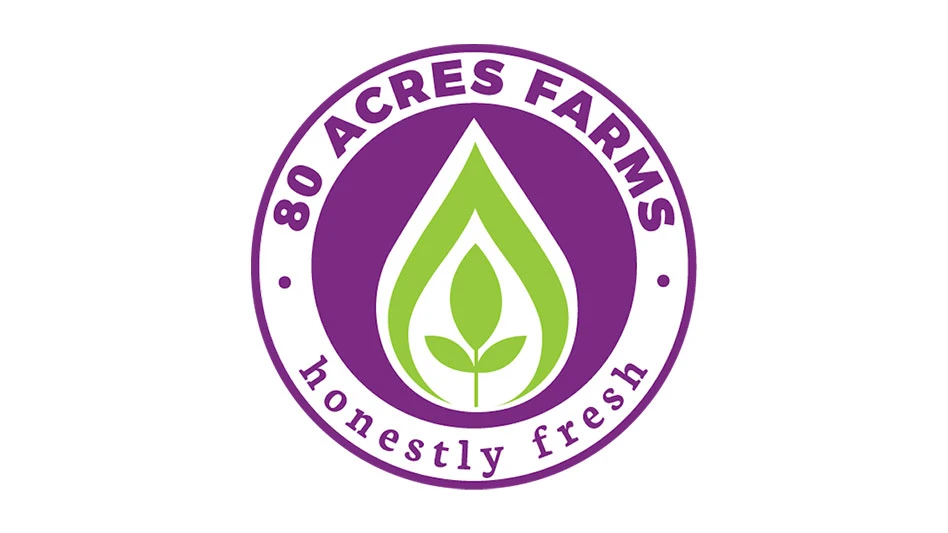
 Caterpillars may be the larval or immature stage of moths and butterflies, but they’re also major destroyers when it comes to greenhouse-grown horticultural crops, including vegetables and ornamentals. Moths enter greenhouses through openings such as doors, vents, louvers, and sidewalls, and then lay their eggs on plant leaves that hatch into caterpillars—pests with chewing mouthparts.
Caterpillars may be the larval or immature stage of moths and butterflies, but they’re also major destroyers when it comes to greenhouse-grown horticultural crops, including vegetables and ornamentals. Moths enter greenhouses through openings such as doors, vents, louvers, and sidewalls, and then lay their eggs on plant leaves that hatch into caterpillars—pests with chewing mouthparts.
The main players: what to look for
There are a number of caterpillars that may be encountered feeding on horticultural crops grown indoors or under cover, including: the beet armyworm (Spodoptera exigua), cabbage looper (Trichoplusia ni), corn earworm (Helicoverpa zea), diamondback moth (Plutella xylostella), European corn borer (Ostrinia nubilalis), imported cabbageworm [Artogeia (Pieris) rapae], leafrollers (Choristoneura spp.), and cutworms. Some caterpillars feed on certain plant types or crops in a particular plant family. For example, imported cabbageworm, diamondback moth, and cabbage looper primarily feed on plants in the cole crop family (Cruciferae), which includes vegetables and ornamental cabbage and kale. Imported cabbageworm is a velvety green caterpillar approximately 1-1/4 inches long with a yellow stripe extending down the back and a fragmented line of yellow spots along each side. Diamondback moth caterpillars are approximately 1/8 inch long, light green in color, and either chew or mine leaves. Cabbage looper caterpillars are light green, at approximately 1-1/2 inches long, have white stripes extending down the back and along the side; this is in contrast to the deeper green and yellow stripes of the imported cabbageworm caterpillar. Furthermore, cabbage loopers have three pairs of legs near the head and three additional pairs, referred to as prolegs, near the last abdominal segment.
Life cycle and feeding habits
The life cycle entails an egg, caterpillar or larva, pupa and adult. Female adults are generally active at night, although they may be observed during the daytime. Females fly around and lay eggs on leaf undersides. The number of eggs laid depends on the species with females laying anywhere from 20 to 100 eggs during their lifetime. Eggs hatch into caterpillars that feed on plant leaves. Caterpillars undergo a series of stages referred to as instars, in which there is an increase in size from one instar to the next. There may be three to five instars depending on the species.
Caterpillars feed extensively at first and then consume less as they prepare for pupation. The caterpillar stage can last a week to 10 days. The caterpillar eventually undergoes a transitional or pupae stage. Some caterpillar species spin cocoons whereas others do not. Pupation may occur on plants, in stems, or on the growing medium surface. After one week, adults emerge from the pupae. The life cycle from egg to adult is approximately three to four weeks, depending on temperature.
The presence of fecal deposits (frass) or “poop” on plant leaves is an indication of caterpillars, which may consume the entire leaf or leave the mid-vein. Several caterpillar species will roll leaves together with silken threads, whereas other species will tunnel into plant stems. If caterpillar populations are extensive and damage is not noticed in time, this can reduce crop quality or result in crop losses. Plants grown inside greenhouses may suffer more damage from caterpillars than plants grown outdoors because natural enemies, including parasitoids and predators, may occur at higher numbers outdoors and there is less migration of natural enemies into greenhouses.
Tips for reducing offspring
At night, adult moths are attracted to lights that are located in and around greenhouse facilities, so minimizing lighting during peak moth activity will avoid luring females into areas where they can lay eggs. Weed removal both inside and outside greenhouses is also important as many weeds serve as hosts for eggs. In addition, cleaning up plant debris will remove sources for overwintering pupae.
For detecting peak adult activity, pheromone or blacklight traps are recommended. Conducting plant inspections on a regular basis, when adult moths are flying around, will also avoid damage to crops from caterpillar feeding. Placing yellow sticky cards near susceptible crops inside the greenhouse will capture adults, thus helping time insecticide applications.
When scouting, always check plants near openings including vents, doors, louvers, and sidewalls because these are where adult moths can enter, especially those openings near corn, soybean or vegetable fields that are in decline or have been harvested.
Insecticides: when, how, and what
Insecticides may be used on the caterpillar stage, with most materials having contact activity, so thorough coverage of all plant parts is essential. The microbial insecticide, Dipel, containing the active ingredient - Bacillus thuringiensis subsp. kurstaki, is commonly used against caterpillars. This insecticide is very selective with activity solely on caterpillars. However, it is most effective if it’s applied when caterpillars are young. The active ingredient has to be ingested to be effective and young caterpillars don’t have to consume as much plant material before they die, but larger caterpillars must eat more plant material before the active ingredient inhibits feeding. Subsequently, caterpillars can still cause plant damage. The insecticide may need to be reapplied frequently depending on the time of year. In addition, exposure to ultra-violet (UV) light and overhead irrigation may shorten residual activity.
The insecticide Conserve, which contains the active ingredient spinosad, is used for thrips control, but it also has activity on various caterpillar pests. Conserve works as both a contact and stomach poison. There are a number of other insecticides labeled for use against caterpillars on horticultural crops. Always read the label of all insecticides before use to make sure they can be applied to horticultural crops.
Natural enemies: biologicals
Finally, another option that is available to greenhouse producers experiencing problems with caterpillars on a regular basis is to purchase natural enemies for release into the greenhouse.
Parasitoids (parasitic wasps) in the genus Trichogramma attack the egg stage of various caterpillar species including diamondback moth, cabbage looper, and imported cabbageworm. The lifespan of the parasitoids is approximately seven days as it matures within the egg, and then up to 10 days as adults. Several species of Trichogramma wasps may be available from commercial insectaries.
Be sure to contact your biological control supplier in advance in order to determine availability of these parasitoids.
Raymond A. Cloyd is a professor and extension specialist in Horticultural Entomology/IPM at Kansas State University - Dept. of Entomology.
Get curated news on YOUR industry.
Enter your email to receive our newsletters.
Explore the October 2014 Issue
Check out more from this issue and find your next story to read.
Latest from Produce Grower
- University of Evansville launches 'We Grow Aces!' to tackle food insecurity with anu, eko Solutions
- Lawsuit challenges new H-2 visa rules
- Q&A: Sandra Eskin Leads Food Safety Advocacy Organization, STOP, as CEO
- Find out what's in FMI's Power of Produce 2025 report
- The Growth Industry Episode 3: Across the Pond with Neville Stein
- Martin A. Makary Sworn in as FDA Commissioner
- PG CEA HERB Part 2: Analyzing basil nutrient disorders
- LettUs Grow, KG Systems partner on Advanced Aeroponics technology





